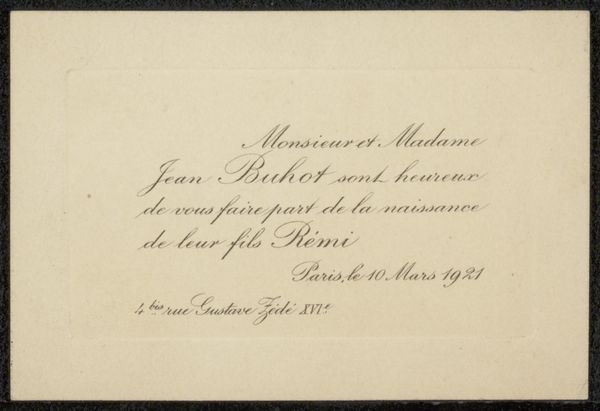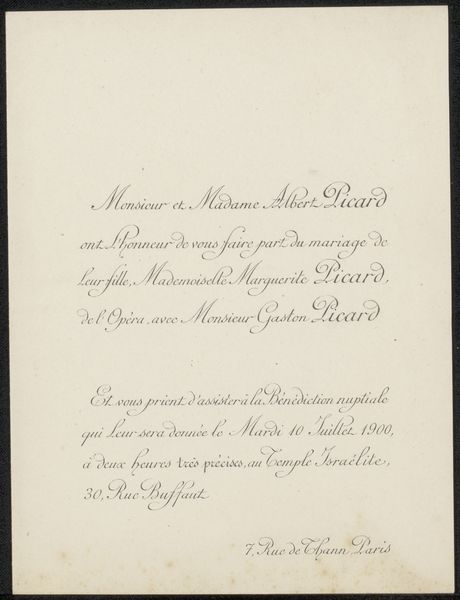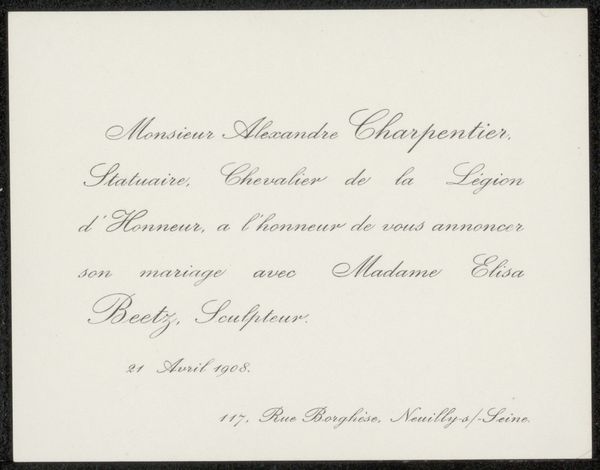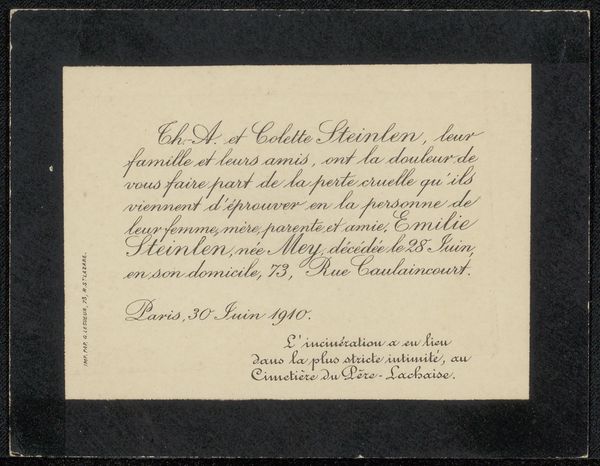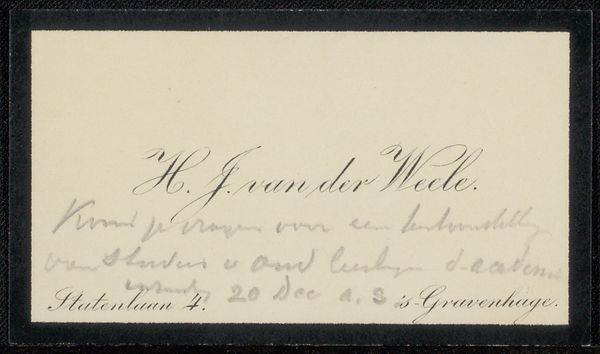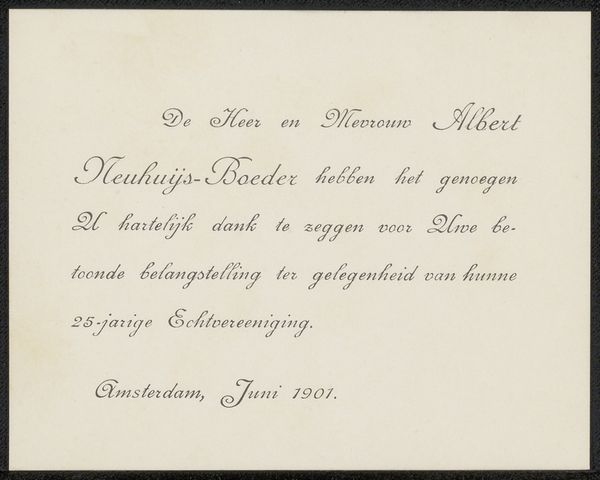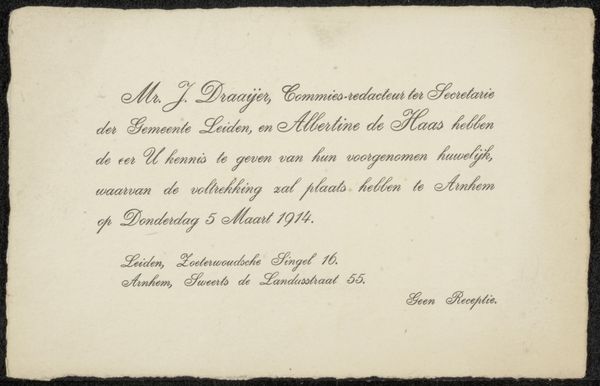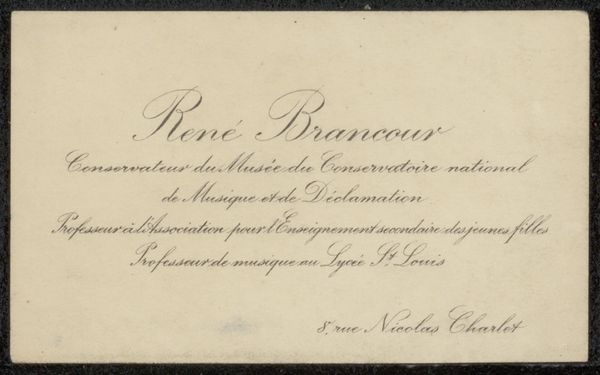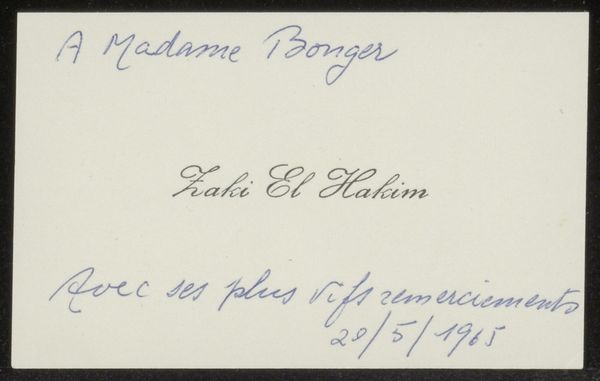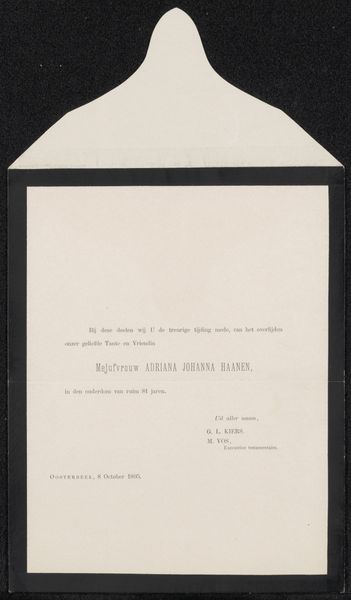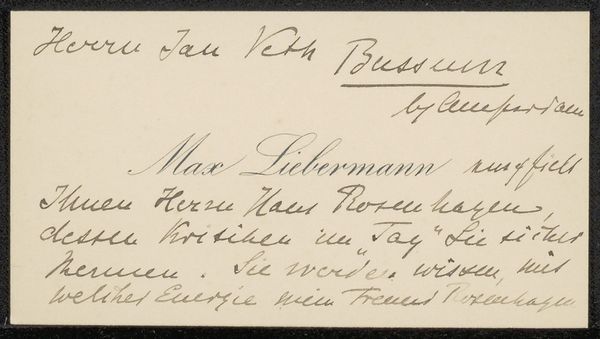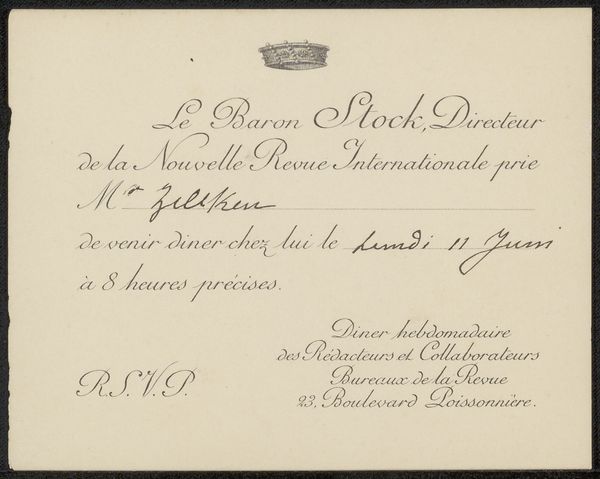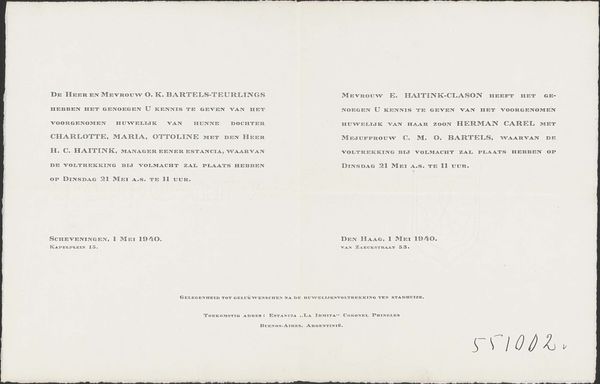
drawing, paper, ink
#
portrait
#
drawing
#
paper
#
ink
#
modernism
#
calligraphy
Copyright: Rijks Museum: Open Domain
Curator: This work, residing here at the Rijksmuseum, is a drawing titled "Bedankkaart aan Philip Zilcken." It was created anonymously in 1914 using ink on paper. It presents itself almost as a formal portrait, but it isn't of a person but rather language itself. Editor: Ah, the austerity hits you first, doesn’t it? Like stepping into a quiet room after a storm. There’s something very graceful about the somber, formal tone given it's essentially a thank you note. It feels less of an exuberant thanks and more of a melancholic acknowledgement of condolences during a painful time. Curator: The means of production are important here. Look at the precision, the care. Ink, traditionally associated with documents and formal communication, elevates a simple "thank you" to a testament to the social expectations around grief. The pressure, thickness and strokes used to draw the text by hand versus something more machine produced gives it character and makes each one different. Editor: I'm seeing not just grief, but stoicism. Notice the stark contrast, between the elegant swirls of calligraphy and the very direct, almost blunt, language used to convey what's happening. It's both a performance and a genuine expression, and perhaps the constraints force the emotion to speak with all the more eloquence. Do you think that constraints, here through both format and formality, give the creator more creative freedom? Curator: Constraints in art are not limiting, but the framework for creation. In a social climate dictated by certain conduct, it is important that we remember this object was circulated in a time of strict regulation, but with this artistic medium used with ink on paper it became easier to control distribution. A letter or card with careful brushstrokes as art for social commentary as well as being decorative? Interesting. Editor: Indeed. In something so restrained, there is a real art. You begin to notice the curves of the text are all interconnected; you feel the subtle tensions between them as if holding back, on the cusp of revealing too much. You think what it could be for if the creator was set completely free from what their intentions were. Curator: In viewing “Bedankkaart aan Philip Zilcken", we begin to dissect how deeply intertwined human sentiment and social expectation can be. The production, though modest, showcases art used in daily communications as important artifacts that show means of distributing grief in our capitalistic consumption culture. Editor: And for me, it's a powerful reminder of how silence itself can speak volumes. The elegance with which the anonymous creator was able to speak in careful whispers so clearly after such turbulence has given me even more inspiration. It's about finding poetry where you least expect it, even in the most formal and solemn corners of life.
Comments
No comments
Be the first to comment and join the conversation on the ultimate creative platform.
